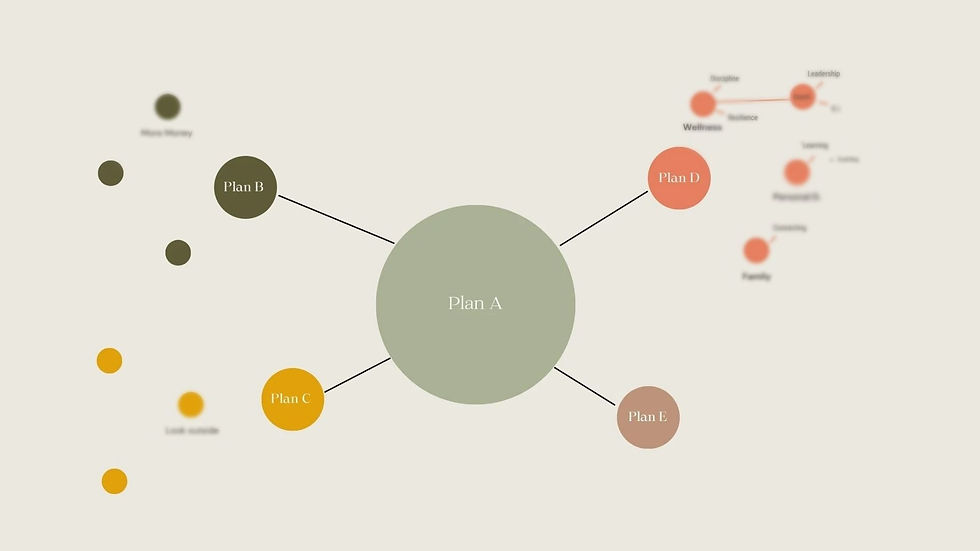The Anxiety Trap: how to break free
- simonavaglieco
- Jun 10, 2020
- 4 min read
Updated: Dec 2, 2021

Michael Wolf The Transparent City
Three weeks into the lockdown, working in isolation while reading about statistics and death rates. Maybe one of your friends has just lost their job. You tell yourself everything is fine, but it is getting incredibly difficult to stay positive. You don't sleep well. You worry. You cannot see when or how it's going to end. Somehow you feel it's going to get worse. You are sure.
Difficult times go hand in hand with anxious thoughts. For some more intensely than others. The good news is that we are not as helpless as we may feel, and we have strategies to make it better.
If you have had an anxiety attack, you may be aware of the symptoms and the unpleasant feeling of being powerless. Anxious thinking is somewhat different because we can find ways to control our mind. As a coach, some of the work I do is devising with clients strategies to deconstruct anxious thinking so that ultimately it can be managed.
According to Anxiety Canada, specific patterns of thought can trap us in a spiral of anxious thinking.
Negative Brain Filter; focussing all on the negative without seeing anything that is going well
Mind Reading; believing you know what the others are thinking
Fortune-telling: believing you can predict the future
Overgeneralising: assuming that something happened will happen again
Catastrophising: seeing only the worst possible outcome no matter how likely it can be in reality
Black and White thinking: seeing the only extreme possible results but never outcomes "in-between".
In a time of a pandemic like the one we are experiencing, we can immediately see how this pattern can develop. An unknown threatening situation can plunge us in a state of fear
While the stress built over time can lead us to an anxiety attack, in the long term, these cognitive distortions can have more profound consequences eroding our self-esteem and holding us back from success.
In a time of a pandemic like the one we are experiencing, we can immediately see how this pattern can develop. An unknown threatening situation can plunge us in a state of fear because we don't have the safety net of the experience on which we can rely. Anxiety feeds on fear. So what can we do? First, we need to be aware of some physical signs of anxiety—difficulty breathing, sweaty palms, difficulty concentrating. When we acknowledge them, we can pause, breath and focus the mind on something different. See this as a First Aid kit.
The second step is creating awareness of the trap so that we can devise a strategy to deal with it. If your mind feels overshadowed say, by the negative filter, you could try writing your thoughts down. It would immediately destress the brain, and by making them concrete, probably, lower the threatening level. The efficacy will then depend on how we can leverage clients' skills to find tailored solutions, so the initial process of change will not feel unnatural.
Marlene's case exemplifies the power of the deconstructive coaching process. By naming the 'trap', Marlene gained awareness of what was happening. She immediately felt back in control; her competitive spirit was piqued, and she quickly leapt to the opportunity of showing who was in charge.
Meet Marlene. Marlene, a sales executive, told me she had been suffering from anxiety since she was eight years old. She said that at that age, she was worried she would forget all she had learned in class. It probably didn't help that her mum, a teacher, kept a close eye on her daughter's performance at school and Marlene herself was a perfectionist and by her own admission very competitive. She was familiar with the signs of an anxiety attack (and somewhat annoyed by them), and she was trying to do anything to avoid it. The result was that Marlene couldn't take time off, even a few hours to relax, let alone go on holiday. Her mind was continuously reminding her of the things she should do and the dramatic consequences of not doing them. Marlene was continually overgeneralising, at times nosediving into a catastrophic mood and occasionally suffering from anxiety attacks.
The first step was to make her aware of what was happening. She could then come up with a workaround; in her case, creating a checklist of her daily accomplishments and a separate to-do list of tasks with clear deadlines. Sticking to this plan, she could slowly learn to enjoy her breaks without the worry that she had left something behind.
Marlene's case exemplifies the power of the deconstructive coaching process. By naming the 'trap', Marlene gained awareness of what was happening. She immediately felt back in control; her competitive spirit was piqued, and she quickly leapt to the opportunity of showing who was in charge. The plan played well to her strong organisational skills.
While Marlene's story is inspirational, we need to keep in mind that this is only the beginning of a process that can be challenging.
To open ourselves to our transformation, we must first be able to picture ourselves in a future scenario (vision) and be able to identify why we want to give it a go in the first place. Only then can we embark on a long and at times treacherous journey of change bearing in mind that there are no miraculous solutions but constant and supported work so that we can accomplish our goal. Don't be fooled by the apparent simplicity of the strategies described above. They are part of a skilful, personalised action plan, which requires regular monitoring and constant adjustment. Determination and time will surely give us a head start. Still, to achieve sustainable change, the right professional support is necessary if we want to turn our efforts into success.



Comments